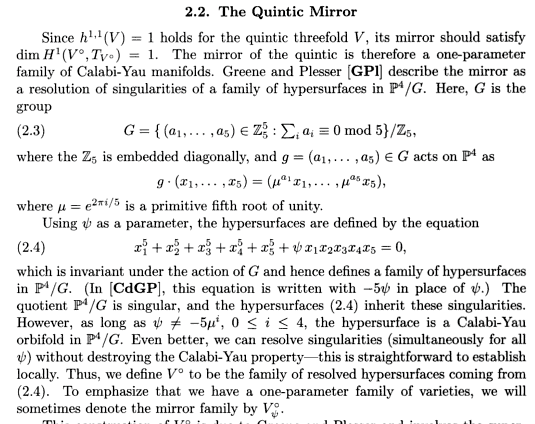In the 90-91 pager "A PAIR OF CALABI-YAU MANIFOLDS AS AN EXACTLY SOLUBLE SUPERCONFORMAL THEORY", Candelas, de la Ossa, Green, and Parkes, brought up a family of Calabi-Yau 3-folds, canonically constructed from a sub-family of quintic CY 3folds, as a "mirror" to quintic an did some calculations on the mirror family to extract the GW invariants of the quintic.
I was having a discussion with a group of physicist on what argument lead them to take that particular family as the mirror, whatever mirror means; and apparently, the original point of view among physicists has been changed in past two decades and they did not know the answer either.
Does any one know what (may be physical) original recipe lead them to that particular mirror family?
This question should have been asked before, but a brief search did not lead me anywhere. Let me know if thats the case and I would remove this post.

